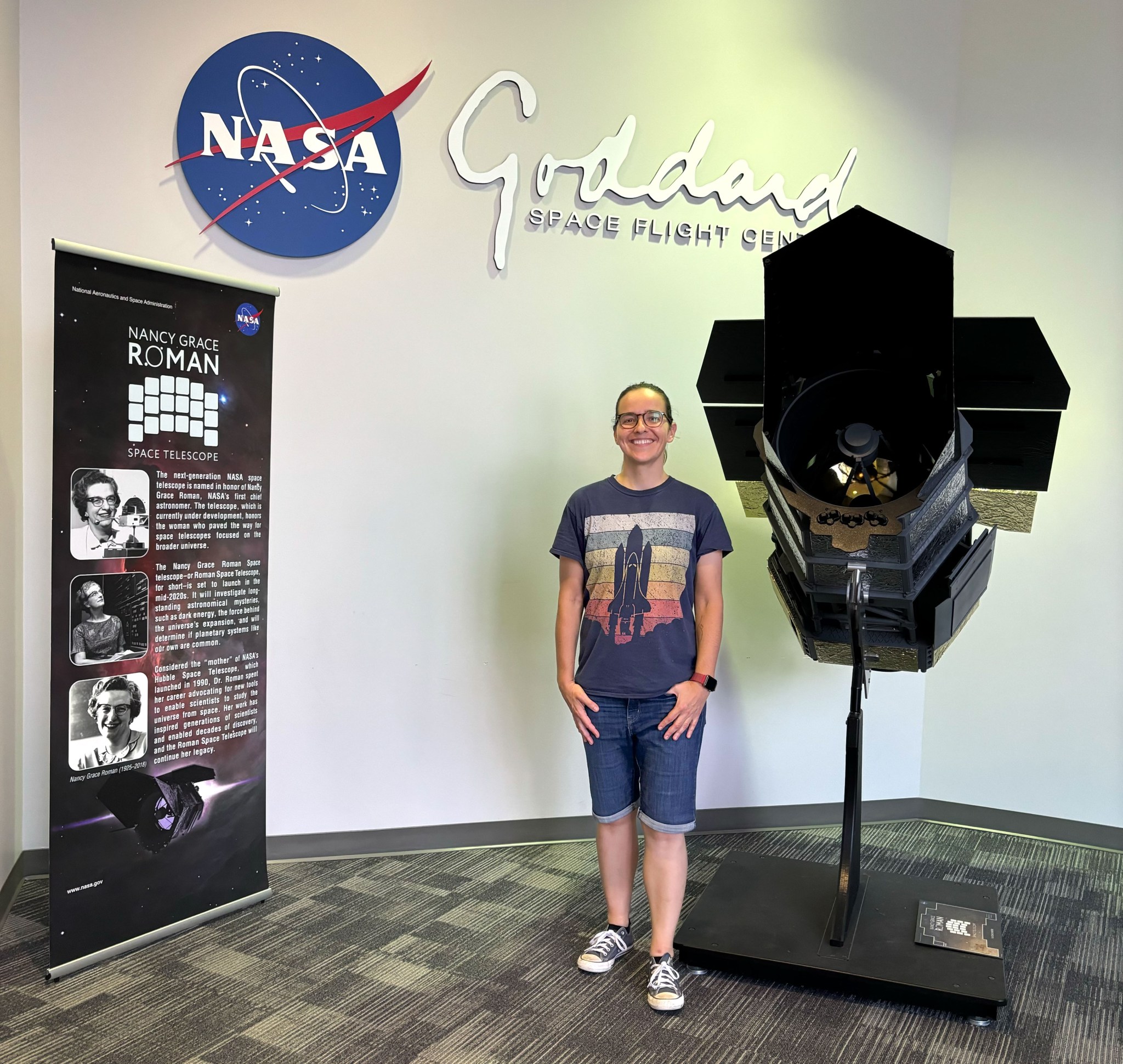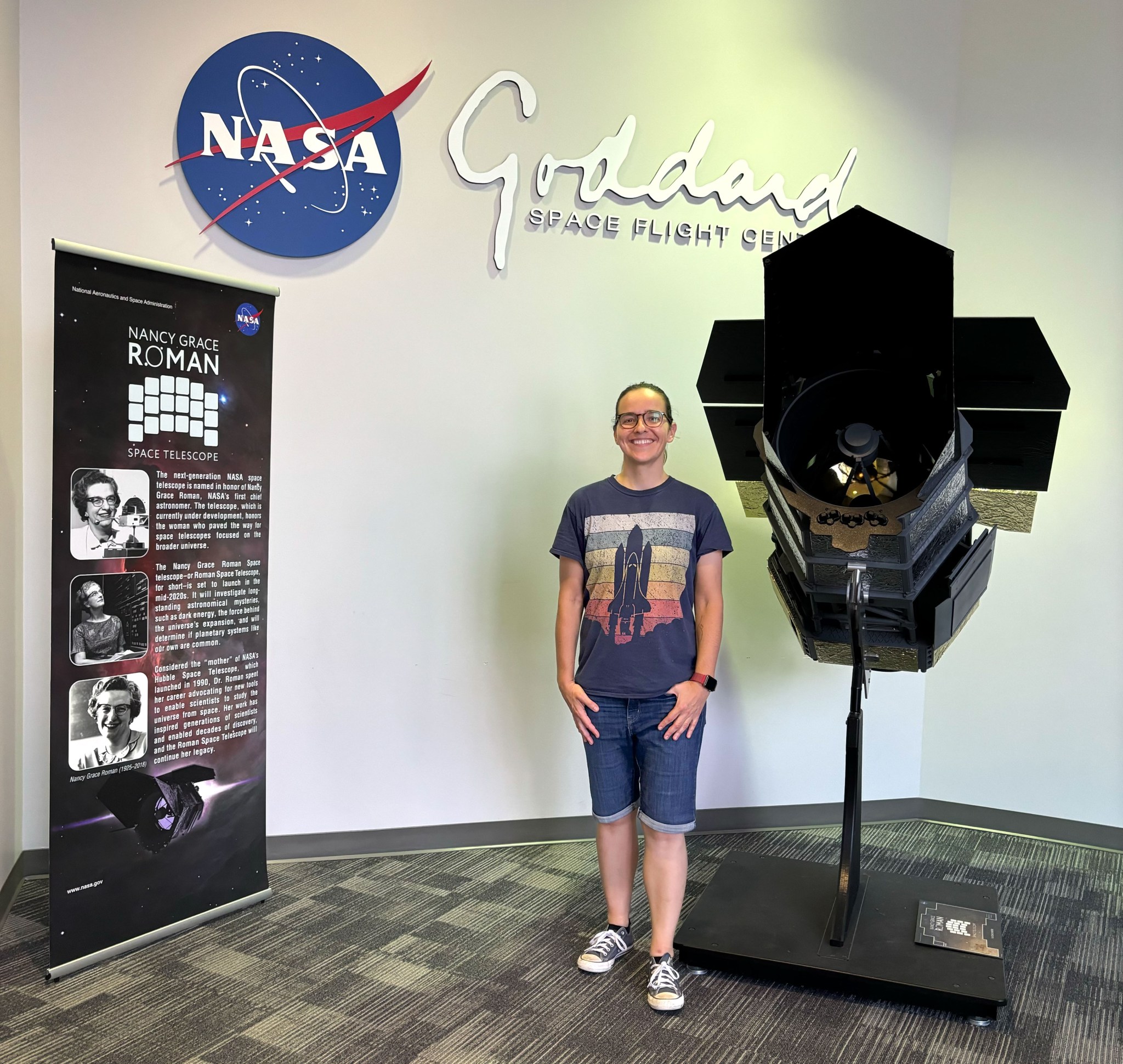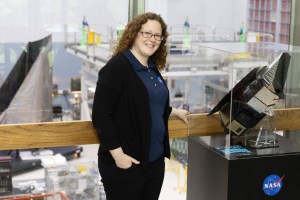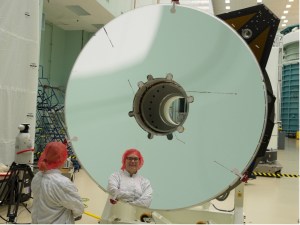Dr. Ariadna Farrés-Basiana would look up at the sky and marvel at the immensity of space when she was younger. Now, the bounds are limitless as she helps NASA explore the expansive universe by computing the trajectories and maneuvers to get a spacecraft into space.
Name: Dr. Ariadna Farrés-Basiana
Title: Astrodynamics and solar radiation pressure specialist,
Formal Job Classification: Scientific collaborator
Organization Navigation and Mission Design Branch (Code 595)
What is your role at Goddard? What do you focus on?
I am part of the flight dynamics team. We are the ones in charge of computing the trajectories, maneuvers, amongst other things to get a spacecraft into space to its final destination. I am currently working on two main projects: the Space Weather Follow On-Lagrange 1 (SWFO-L1) mission, which is a National Oceanic and Atmospheric Administration (NOAA) mission that will monitor space weather, and NASA’s Roman Space Telescope. I participate in both missions as part of the flight dynamics team. I am in charge of calculating the transfer trajectory, which would be the path through space that these missions must follow to go from Earth to Lagrange points L1 and L2. These are places in space where gravitational forces balance each other and a spacecraft doesn’t need to spend as much fuel to maintain its orbit. In addition to that, I work on station-keeping strategies, which are the routine maneuvers that we must do to keep our telescope in orbit.
What was your path to NASA?
My Ph.D. focused on solar sails, which is a way of navigating through space using the force of light emitted by the Sun as if it were wind that drives the sails of the spacecraft. I always thought that my contribution to NASA would be as a researcher or as a professor at a university. I had always dreamed of joining NASA, but I never thought it was possible. At the time, I was trying to find a position as a tenured professor at the University of Barcelona. While I was waiting, a professor of mine who had collaborated with people at NASA back in the ’90s called his former colleagues and told them that he had a Ph.D. student who was looking for a summer internship; then he asked if I could intern with them for a few months. And they said yes. I came to Goddard one summer as an intern and it was amazing. In the end I didn’t get the position as a tenured professor in Spain, and when I told my colleagues that I didn’t have a job, they asked me if I wanted to come and finish the research project I had started here, and after that I continued to extend my internship. In May 2017, I joined Goddard for the second time, this time as a full-time employee. What would have been only seven months of internship ended up being seven years that I have been here.
What made you interested in mathematics and specialize in it?
When it came time to choose what I wanted to major in, I was deciding between two majors: aerospace engineering, because I’ve always had space on my mind, or mathematics because I really enjoyed it. I chose mathematics, mainly because I could stay in my country. About 20 to 25 years ago, research in aerospace was not a thing in Spain; specializing in space engineering would have meant moving from my hometown and going to Madrid, which is where the only university I knew I could do that was. So, I ended up choosing math and decided it would be cool to learn more about it.
You mentioned that you were interested in space since you were a child. What fascinated you about the sky?
I remember looking at the sky, looking at the Moon and wondering what’s out there. My dad was also into science, and he would explain things regarding space. He had a friend that had a telescope and from time to time, we’d go observe it which was fascinating. There was something about the immensity of space and the fact that we don’t know much about it that interested me.
How do you feel about getting to work on two different telescopes, having been inspired by telescopes when you were younger?
It is very gratifying to know that my work will help these telescopes go to space and operate from there. Finding solutions for this makes me very proud of what I do. I feel like all the knowledge I have is being applied to something physical, practical, that will be in space and that will help other scientists make great discoveries.
What story or tradition from your hometown makes you smile when you think about it?
The most beautiful day is the Sant Jordi festival, it is a precious day. It’s the day of the book and the rose. It’s not a holiday, but everyone is looking for an excuse, any time of the day to go out and buy a book and a rose for their loved ones. The atmosphere is beautiful during those days. Also, my brother’s name is Jordi, so it’s a special day because we all celebrate it together.
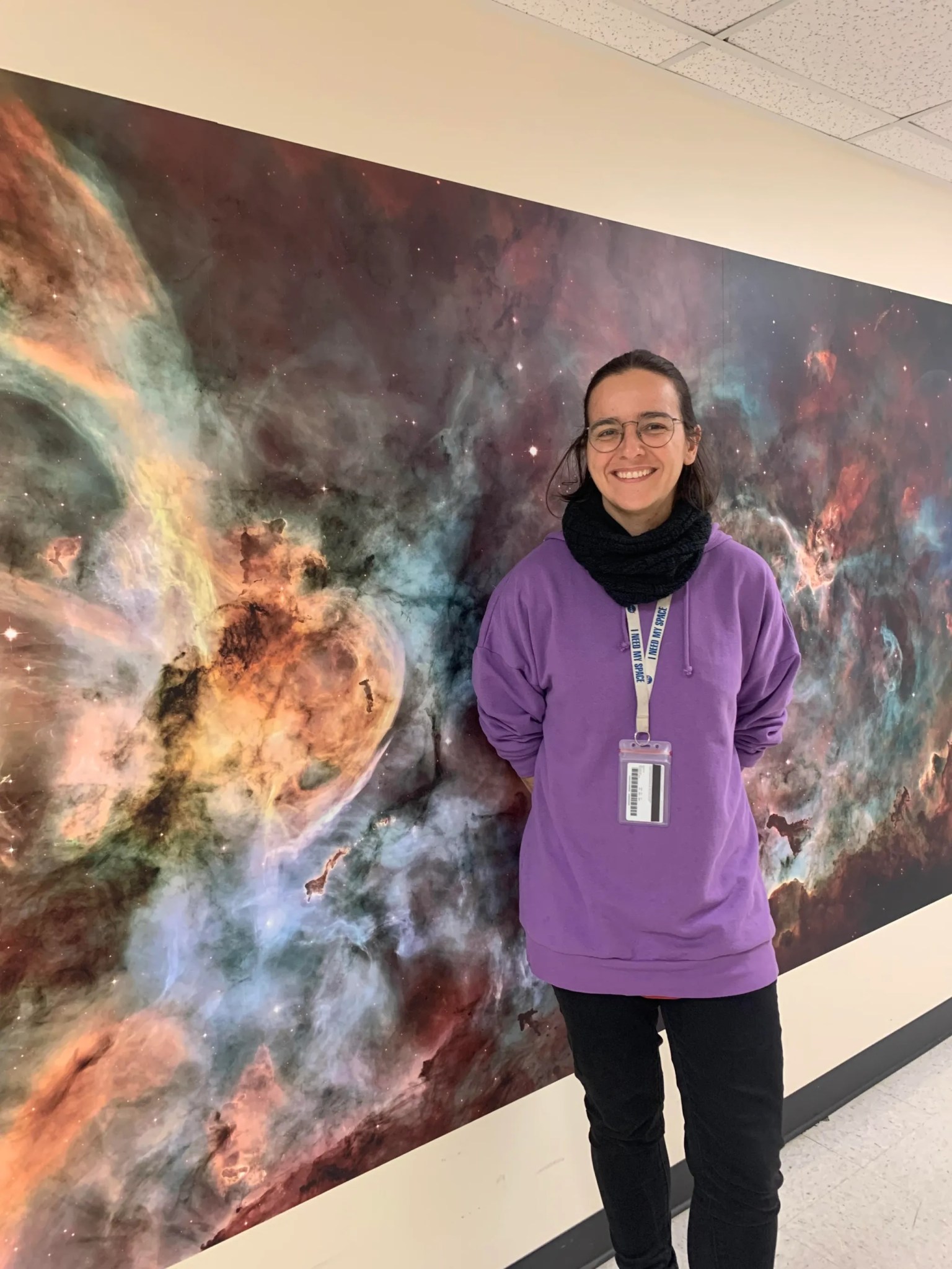
Are you involved in other activities outside of your work at NASA?
I am part of the Hypatia project. It encourages scientific vocations among girls who are potentially interested in science, technology, engineering, and mathematics (STEM) careers. We do analog missions in the Utah desert, which simulates day-to-day life on Mars. Who has not dreamed of going to space, or has simply wondered what a trip to Mars or life on Mars would be like? With these simulations we help bring these dreams closer to students. What I like most about this initiative is being able to go to schools to explain our experiences to them. It is important to show different women who do research. This helps change the ideology of many who imagine that to be a scientist you must be a man with glasses and a white coat. There are few women in the space field. Many times, you have the feeling that you have to prove that you are worth more, show that you are there because you deserve it. It’s nice to be involved in projects like Hypatia, because I’ve spent a lot of time thinking about gender in STEM disciplines. It is my contribution so that the next generations are not so afraid to try to pursue a STEM career.
Where do you see yourself in the next five years?
I see myself here at NASA, working on different missions, perhaps taking on a role with a little more leadership or more responsibility.
By Alexa Figueroa
NASA’s Goddard Space Flight Center, Greenbelt, Md.
Conversations With Goddard is a collection of Q&A profiles highlighting the breadth and depth of NASA’s Goddard Space Flight Center’s talented and diverse workforce. The Conversations have been published twice a month on average since May 2011. Read past editions on Goddard’s “Our People” webpage.
Share
Details
Related Terms
